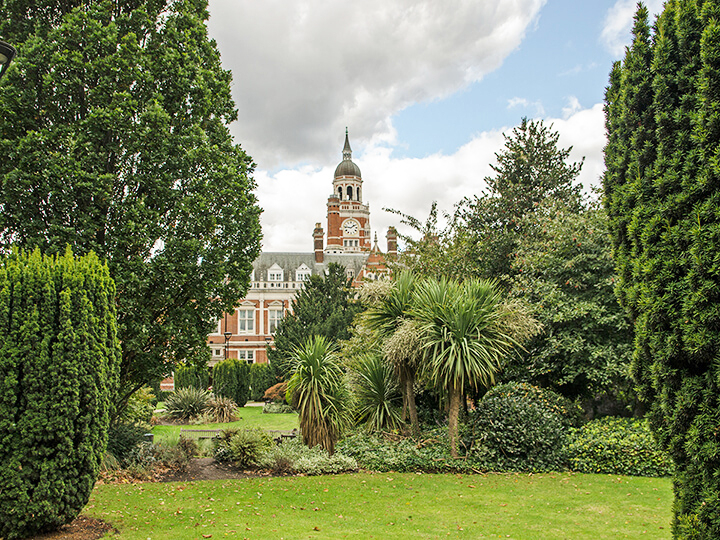Lincolnshire Fire and Rescue Service (LFRS) was been involved in a data capture and migration exercise. This was to align its current gazetteer with the National Land and Property Gazetteer (NLPG) in preparation for the FiReControl initiative.
Fire and Rescue services across England are preparing for control convergence as part of the FiReControl project, which will provide an integrated and modern network of nine Regional Control Centres (RCCs). These will be able to receive calls and mobilise resources across the country.
Lincolnshire Fire and Rescue Service has approximately 900 fire fighters and fire staff. The county area is organised into four Station Support Groups (SSGs) that support the 38 fire stations throughout Lincolnshire.
In preparation for the cutover to FiReControl, Lincolnshire Fire and Rescue (LFR) have been involved in a data capture and migration exercise to align its current mobilising gazetteer with the National Land and Property Gazetteer (NLPG). The NLPG will be used as the core component of the eventual FiReControl mobilising gazetteer. In common with many other fire services their current gazetteer is street based and the only property based data held in it relates to the few buildings which are associated with particular risks. A property based gazetteer such as the NLPG can provide more accurate location for command and control and a rich repository of additional information including fire risk data. Mobilising fire crews will benefit from knowing exactly where they are going, the details of the property with which they will be dealing, along with any special equipment requirements.
Rather than being a passive user of NLPG data, LFR recognised the opportunity to engage with the NLPG process and use their expertise and local knowledge to drive further improvements in the data. With this in mind, LFR is developing strong working relationships with the seven Local Authority Land and Property Gazetteer custodians in their area of operation. These are Lincoln City Council, Boston Borough Council, South Holland District Council, East Lindsey District Council, West Lindsey District Council, North Kesteven District Council and South Kesteven District Council.
Meetings are held with the LLPG Custodians which include representation from Intelligent Addressing, the NLPG custodian. The group meets whenever necessary to monitor progress. Additional meetings with individual authorities are held on an ad-hoc basis.
Through the meetings a clear understanding of the particular requirements being placed on the data in order to facilitate effective Command and Control operations has been achieved. This is a relatively new application of NLPG data and in some cases there are new requirements and it is necessary to initiate data collection and improvement exercises. LFR have been very pleased with enthusiasm and knowledge of the custodians.
In order to smooth the query process, the group has agreed a set of protocols for exchange of queries via email, including, for example, a simple arrangement whereby the number of queries was limited to 10 per authority per day. This has kept it manageable. Queries are raised in a simple Excel spreadsheet along with Word documents containing maps, copied and pasted from LFR’s MapInfo GIS, in order to explain more complicated queries.
The basic details in each query are as follows:
• district council
• grid references (easting and northing)
• relevant UPRN or USRN references
• the full address
• the nature of the query or updated information
These arrangements have been forwarded as an input into the development of a formal set of nationally agreed protocols.
Until these protocols are adopted, LFR will concentrate on sending any missing street and property address information through to the LLPG custodians along with any useful business information.
Using the NLPG to mobilise FiReControl
Lincolnshire Fire and Rescue
Key areas that have generated queries so far include positional accuracy, town and locality information and inclusion of business name information for commercial properties. In some instances large sites, such as hospitals, may need to be split down into smaller areas such as wards. By liaising with the national FiReControl project team, it has been possible to confirm that these are a valid understanding of the requirements of the Regional Control Centres and these key areas will be addressed through a Communication Plan from the FiReControl Project Team to the Local Authority Chief Executives.
During the gazetteer matching process LFR has already been able to identify areas within Lincoln City council boundaries that were in need of improvement. As a result Intelligent Addressing investigated the issue and along with Lincoln’s software provider offered support in making the necessary changes as efficiently as possible, for the mutual benefit of all concerned.
As part of the data migration process, LFR need to match all of their existing gazetteer entries to the relevant NLPG record. In some cases this is different due to the way locality and town information is recorded between gazetteers. There is no definitive set of localities for England and Wales. This is further complicated by their subjective nature; two different people may describe a single area in different ways. FiReControl is currently sourcing other datasets that will address this issue.
By discussing these issues with all parties at the local level, it is possible to converge to a single best possible consensus that will suit the needs of all users. This has been translated into national best practice guidelines and new data entry conventions are due to be published during 2009.
Identifying the location of an incident during call handling can be facilitated by use of a business name in addition to the address. Whilst the NLPG is a property gazetteer designed to hold definitive address information generated through the statutory naming and numbering processes, it also has the ability to hold business name information where known. LFR have used the above process to ensure that any change intelligence gleaned from fire inspection activities is passed on to the relevant local authority gazetteer custodian.
By coordinating data management activities across organisations duplication of effort across local government is reduced – data is maintained once and each party gets the benefit of each change. This leads to greater efficiency and improved service delivery for the citizen.
In addition, LFR, as a user of the NLPG has been able to raise the profile of the NLPG within the creating authorities to help ensure the necessary level of support and resource for the project.
As the NLPG becomes more mature, evolving beyond its original eGovernment remit, and use of the data becomes more widespread, it is vital that new requirements are captured, understood and responded to. The NLPG community in Lincolnshire is demonstrating how effective collaboration and management can ensure that this is an organic, user driven process ensuring that the NLPG meets all operational requirements.
Key observations
• LFR has made contact and is working satisfactorily with seven districts in its area of operation
• A working process has been developed for communicating and responding to queries
• Queries will be dealt with in order to ensure that the NLPG plays its part as a key component of the eventual FiReControl mobilisation gazetteer.
• LFR’s use of the NLPG has raised the profile of the NLPG within the creating authorities and helped to ensure the necessary level of support and resource for the project.



